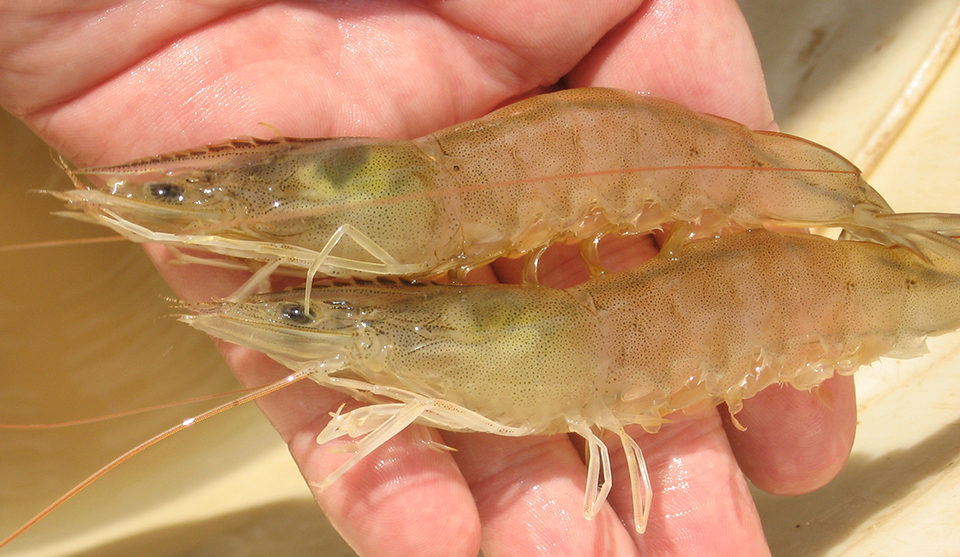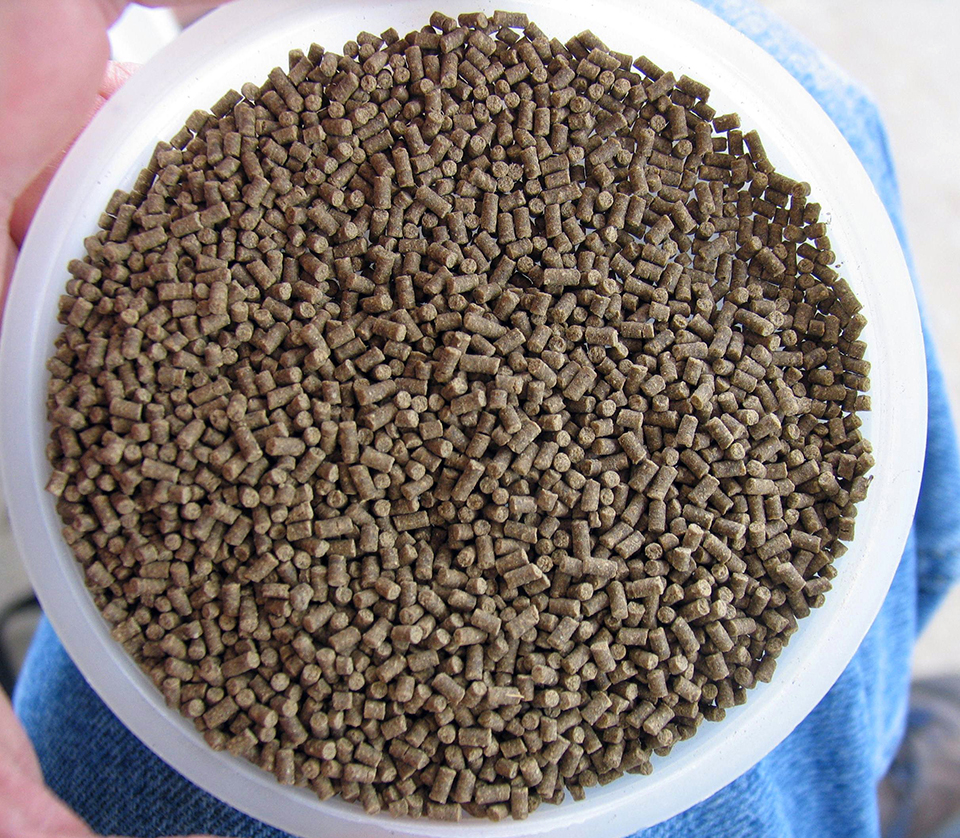Black tigers to whites, low to high density

Shrimp farming has experienced explosive growth over the last decade, with some estimates pegging growth at more than 10 percent/year over the last five years. It is estimated that almost 3.5 million metric tons of shrimp are farmed globally today. Approximately 85 percent of this total is produced in China and Southeast Asia, primarily Thailand and Vietnam. Another 10 percent is produced in India and Bangladesh, leaving a scant 5 percent being produced elsewhere, including the Western Hemisphere.
This phenomenal growth has been accompanied by a major paradigm shift regarding the species cultured and the manner in which they are cultured.
For many years, black tiger shrimp, Penaeus monodon, dominated global production. Around the turn of the century, the industry began to shift production to Pacific white shrimp (Litopenaeus vannamei) as this species was introduced to various Asian countries. Today almost 65 percent of the global farmed shrimp production is white shrimp. It is widely anticipated that this trend will persist, with white shrimp continuing to be farmed at an ever-growing percentage of the total.
Production differences
The reasons for this shift are related to a number of factors and reflect to some degree major differences in the production systems between the two hemispheres. Shrimp farming, as is common with the farming of other species, became a commercial reality when scientists were able to understand how to spawn animals in captivity and ensure commercially viable levels of juveniles.
For the first few decades of commercial production, shrimp were typically farmed at semi-intensive stocking rates of 15 to 25 animals/m2. Harvested yields were in the 1,000 kg/ha range for L. vannamei and several times that for the physically larger P. monodon. Other species were also farmed, including the Malaysian freshwater prawn, fleshy shrimp, Indian white shrimp, Northern white shrimp, Kuruma prawn and others.
Whatever the species, shrimp farming is prone to profit-limiting, periodic disease outbreaks. This is a common feature of all monoculture agricultural farming practices, as waves of global epizootics have periodically decimated regional production. Failure to restrict the movement of broodstock, nauplii and postlarval shrimp, and an early reliance on the use of wild seed ensured the likelihood of disease problems.
In an effort to break these cycles and allow a more secure farming environment that would hopefully strengthen the long-term prospects of developing genetically improved animals, specific pathogen-free (SPF) L. vannamei were developed in the United States. While not well received early on in the Western Hemisphere, SPF white shrimp were accepted in Southeast Asia and have been instrumental in the continued expansion of the farming of this species.
SPF animals, while not necessarily more resistant to or tolerant of diseases, have the advantage of not carrying any known pathogens into the rearing system. Recent efforts to produce SPF P. monodon have been successful, but the lead that L. vannamei have and their widespread acceptance by consumers have ensured that white shrimp will likely remain the species of choice for the foreseeable future.

High density
In the last decade or so, researchers have demonstrated that another advantage to L. vannamei farming is the ability to culture at very high densities. A leader in the commercialization of this approach to production is Belize Aquaculture Ltd. in Belize. Using lined ponds and moving from pilot scale to production scale, Belize Aquaculture was able to show that L. vannamei stocked at more than 100 animals/m2 of pond surface area could be farmed successfully.
As SPF L. vannamei spread into Southeast Asia, so did this method of production. It is now common to see ponds lined completely or around the edges to prevent erosion from paddlewheel aerators throughout the region. It is also not unusual for farms to stock at even higher densities than at Belize Aquaculture. Several enjoy yields of 25-30 metric tons (MT) shrimp/ha/cycle. This is a significant component of the incredible growth that has occurred in the last five years in global shrimp farming.
Current paradigms
The typical production paradigm in Southeast Asia today consists of small ponds of 5,000-square-meter area or less, 1 hp of aeration for every 400-600 kg of anticipated yield, low levels of water exchange, stocking densities of at least 150 animals/m2, plastic liners, supplemental aeration from blowers on the bottoms of the ponds and the use of feed with relatively high protein levels.
Central and South American production models have typically been based on much lower densities. Farmers in the Western Hemisphere have been very slow to adopt the Asian paradigm of SPF L. vannamei reared at very high densities with relatively low environmental impacts. While some farms in the Americas have successfully converted from semi-intensive to super-intensive, there does not appear to be a real move toward the wide adoption of this technology.
Ecuador, the largest producer in the Americas, relied on modest densities, averaging less than 1,000 kg/ha/cycle in producing 150,000 mt or more annually during its pre-White Spot Syndrome Virus heyday. In recent years, Ecuador has once again achieved this level of production, although the country’s paradigm now is extensive culture with less than 15 animals/m2.
Mexico, the Western Hemisphere’s second-largest producer at nearly 100,000 mt/year, has focused on semi-intensive culture with a few farms beginning to experiment with high-density culture. Mexico and Ecuador comprise more than 80 percent of the total shrimp farmed in the Western Hemisphere. Farms in Guatemala, Panama and elsewhere are moving toward higher densities, although very few enjoy the consistency of production that is common in Southeast Asia.
Product qualities
Successful marketing of shrimp depends on several factors, of which cost of production is probably the most important, given equivalent quality. The different regional paradigms lend themselves to different product qualities.
For example, lower density typically yields more consistency in the production of shrimp of head-on quality. Higher-density culture and certain inherent harvesting practices – notably the much higher harvest tonnage and narrow, undriveable berms that impact the time between harvest and arrival at the processing plant – ensure the lower-density farms will hang on to this market sector.
There also seems to be an insatiable demand for commodity farmed shrimp. Forecasts indicate both demand and production for inexpensive product will remain strong.
Pressure continues
It is clear that most of the global growth is taking place in Southeast Asia and that high-density cultural practices are being refined. Many believe that continued improvements in genetics along with the growing acceptance of high-density culture will continue to place increased market pressures on the shrimp producers in the Western Hemisphere.
High-density culture in small ponds lends itself to extremely low-cost production, and farmers in the Western Hemisphere need to critically evaluate their ongoing role in the global marketplace. To ensure they continue to farm shrimp in the decades to come, these producers need to consider how they can compete effectively against the Southeast Asian giant.
(Editor’s Note: This article was originally published in the January/February 2010 print edition of the Global Aquaculture Advocate.)
Author
-
Stephen G. Newman, Ph.D.
President and CEO
AquaInTech Inc.
6722 162nd Place Southwest
Lynnwood, Washington 98037 USA[109,111,99,46,104,99,101,116,45,110,105,45,97,117,113,97,64,109,119,101,110,103,115]
Related Posts

Responsibility
A look at various intensive shrimp farming systems in Asia
The impact of diseases led some Asian shrimp farming countries to develop biofloc and recirculation aquaculture system (RAS) production technologies. Treating incoming water for culture operations and wastewater treatment are biosecurity measures for disease prevention and control.

Health & Welfare
A case for better shrimp nutrition
Shrimp farm performance can often be below realistic production standards. Use proven nutrition, feeds and feeding techniques to improve profitability.

Health & Welfare
A comprehensive look at the Proficiency Test for farmed shrimp
The University of Arizona Aquaculture Pathology Laboratory has carried out the Proficiency Test (PT) since 2005, with 300-plus diagnostic laboratories participating while improving their capabilities in the diagnosis of several shrimp pathogens.

Health & Welfare
A holistic management approach to EMS
Early Mortality Syndrome has devastated farmed shrimp in Asia and Latin America. With better understanding of the pathogen and the development and improvement of novel strategies, shrimp farmers are now able to better manage the disease.


